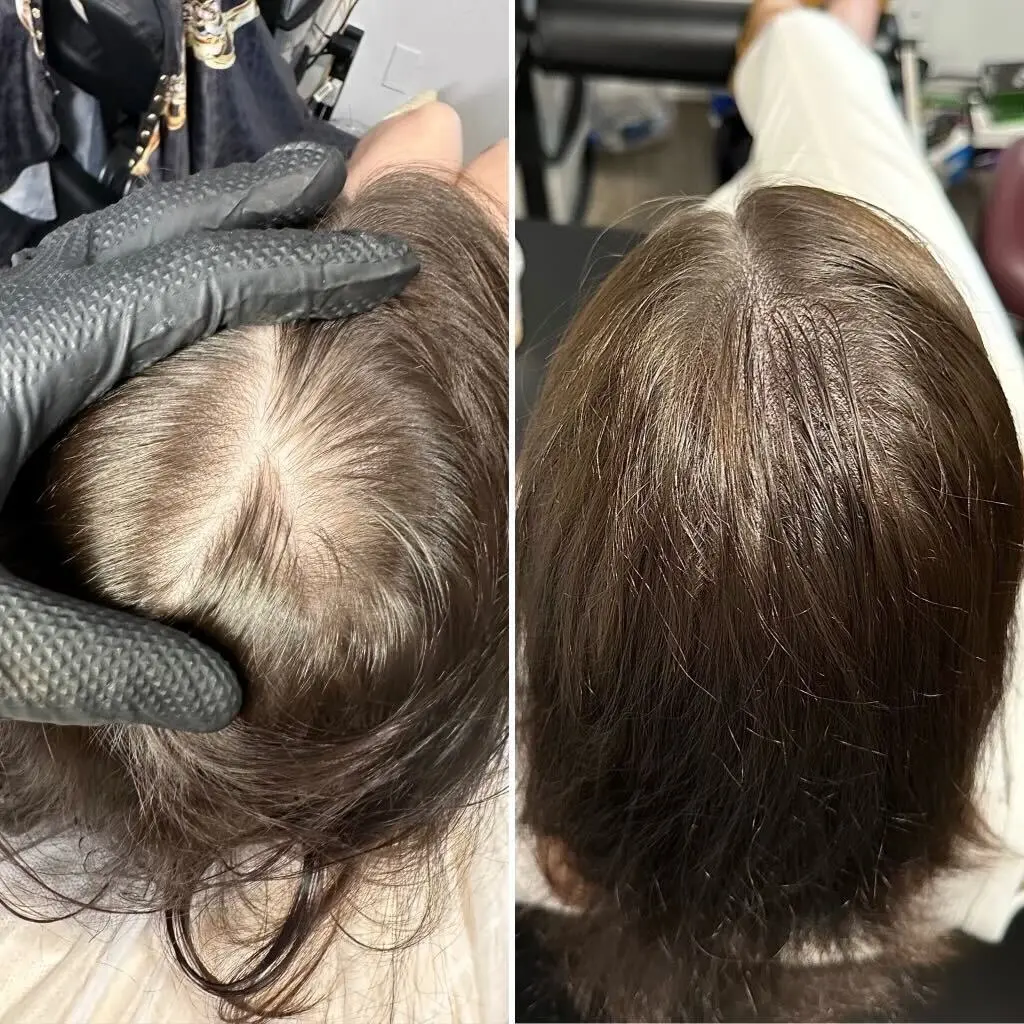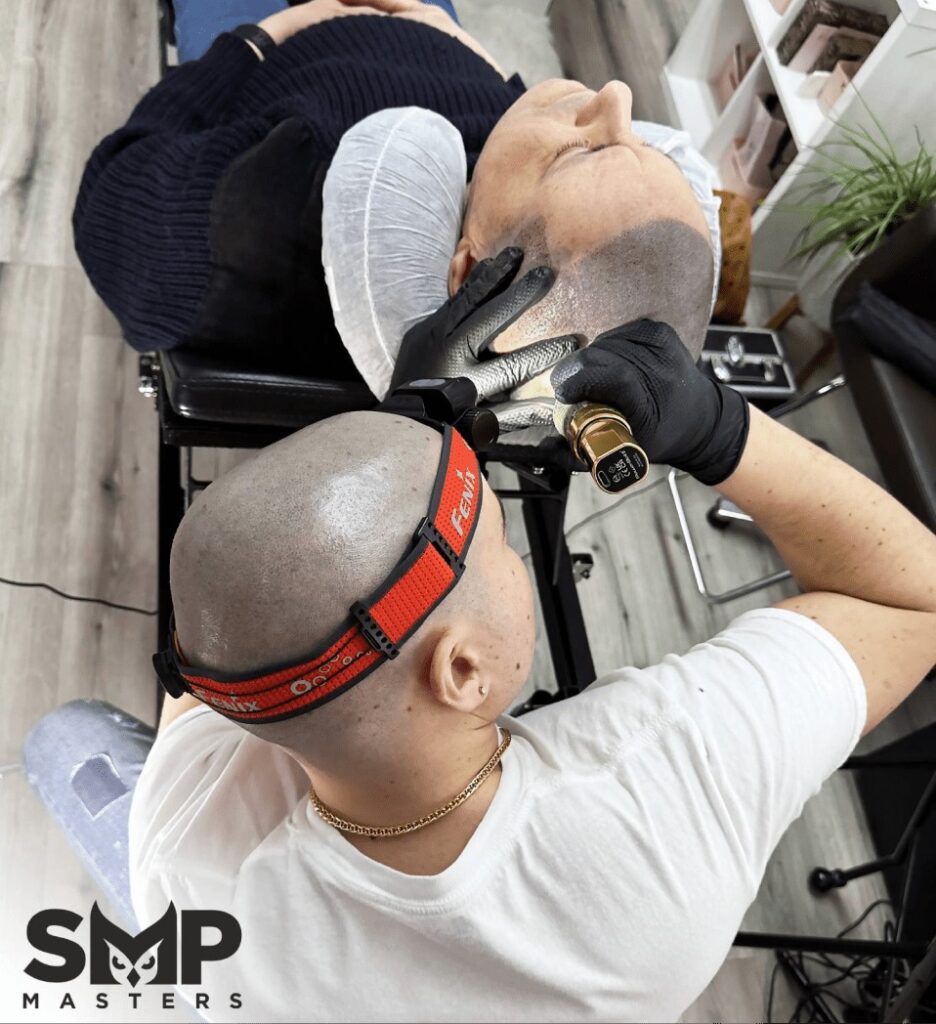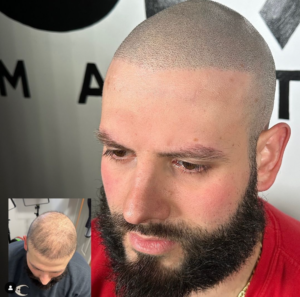In the dynamic world of hair restoration, Hair Transplant for Women The Latest Advances and Techniques” has emerged as a vital topic, underscoring the progress made towards addressing female hair loss with finesse and sophistication. At SMP Masters Scalp Micropigmentation SMP Artist SMP Clinic, we pride ourselves on being at the forefront of this revolution, offering cutting-edge solutions that resonate with the needs of modern women. Recognized as the best hair tattoo clinic, our services extend across various locales, including Rahway NJ SMP, Elizabeth NJ SMP, and the renowned scalp micropigmentation NYC. Our SMP artists in New Jersey are celebrated for their craftsmanship, with our Newark NJ SMP and SMP Marlboro NJ facilities setting the benchmark for excellence. As a leading smp clinic in New Jersey, we understand the nuances of the craft, much like our smp artist in Manhattan, who brings the flair of the city to each procedure. Extending our reach, SMP USA stands as a testament to our commitment to provide top-tier scalp micropigmentation services, restoring not just hairlines but also confidence and poise to our clients.
What Is Hair Loss and Why Does It Occur?
Hair loss, a concern affecting millions globally, is the thinning or complete absence of hair where it often grows, especially on the head. Its occurrence can be attributed to a multitude of factors, ranging from genetics to environmental influences. Specifically, in women, it often manifests as a gradual thinning over the scalp, subtly eroding the hair’s volume.

The Genetic and Hormonal Factors in Hair Loss
-
At SMP Masters | Scalp Micropigmentation | SMP Clinic, understanding the root causes of hair loss is the cornerstone of our approach, enabling us to deliver solutions like scalp micropigmentation NYC with precision and empathy. Genetic predispositions can play a significant role, where conditions like female pattern baldness are common culprits. Hormonal changes, particularly those experienced during menopause or pregnancy, can also precipitate hair loss.
Stress and Lifestyle How They Contribute to Hair Thinning
-
Stress, both physical and emotional, has been identified as a trigger for hair shedding, often reflected in the increasing inquiries we receive at our Rahway NJ SMP and Elizabeth NJ SMP locations. Nutritional deficiencies, certain medical treatments, and hairstyles that pull on the hair excessively contribute to this complex issue as well.
Environmental Influences on Hair Health
-
Environmental factors like pollutants and sun exposure can exacerbate hair thinning, a challenge that our SMP artists in New Jersey are well-equipped to address. Our Newark NJ SMP and SMP Marlboro NJ SMP services provide not only cosmetic respite but also a form of psychological relief, recognizing that hair loss often carries emotional weight.
Female Hair Transplant Facts What Is Female Pattern Hair Loss?
Female pattern hair loss, medically known as androgenetic alopecia, is the most common type of hair loss in women and is similar in nature to male pattern baldness. It typically presents as a gradual thinning of hair, particularly at the crown and the parting line, while the frontal hairline usually remains intact. The condition is influenced by genetics, hormones, and age, and can significantly impact a woman’s self-esteem and quality of life. Unlike male pattern baldness, which often results in a receding hairline or bald spot on the top of the head, female pattern hair loss usually maintains the hairline and involves diffuse thinning throughout the scalp.
As we advance in our understanding of this condition, the importance of addressing it with both medical and aesthetic solutions becomes clear. Treatments can range from topical applications and medications to procedural interventions such as hair transplants and scalp micropigmentation. With personalized approaches, women suffering from this form of hair loss now have a multitude of options to restore their hair’s appearance and their confidence.
Male vs. Female Hair Transplant How Do They Compare?
When it comes to hair transplants, there are some critical differences between male and female procedures due to the distinct patterns of hair loss and other factors:
Pattern of Hair Loss:
- Men typically experience a receding hairline or balding at the crown, which allows for a clearly defined donor area and targeted placement of grafts.
- Women often suffer from diffuse thinning, which means that the donor and recipient areas are not as distinctly separated, making it more challenging to find a viable donor site.
Donor Area and Graft Quality:
- Men usually have a stable donor area at the back and sides of the head with robust hair follicles resistant to DHT, the hormone responsible for male pattern baldness.
- Women may have a wider spread of thinning, including the potential donor areas, which can affect the quality and quantity of grafts available for transplantation.
Hairline Design:
- Men often require a reconstruction of the hairline, which involves an artistic design to restore a natural-looking front and temples.
- Women typically retain their frontal hairline and instead need enhancement of overall density, requiring a more diffused placement of grafts.
Technique and Procedure:
- Men are often suitable candidates for both FUT (Follicular Unit Transplantation) and FUE (Follicular Unit Extraction), depending on their condition and preference.
- Women may benefit more from FUE because it allows for selective extraction of hair follicles, which is important given the potential for a less dense donor area.
Psychological and Emotional Considerations:
- While both men and women undergo hair transplants for similar reasons related to self-image and confidence, societal perceptions and personal feelings about hair loss can vary significantly between genders, influencing the decision-making process and expectations from the procedure.
Outcomes and Expectations:
- Men can typically expect to see a more dramatic change, especially if they had prominent bald areas prior to the transplant.
- Women should anticipate a subtler improvement, with increased fullness being the primary objective rather than complete coverage, which might not be feasible in cases of extensive thinning.
Given these differences, it’s crucial for hair restoration specialists to tailor their approach to each individual, considering their unique pattern of hair loss, scalp health, and personal goals. The success of a hair transplant, for both men and women, depends on the expertise of the surgical team, the suitability of the patient for the procedure, and the quality of post-operative care.
What Are the Most Effective Treatment Options for Female Pattern Hair Loss in 2024?
As we delve into the landscape of female hair restoration in 2024, the advancements in treating female pattern hair loss have been substantial, offering women effective and innovative options to combat this common condition. Here’s a concise overview:
- Topical and Oral Medications: Treatments such as minoxidil, which is applied topically, continue to be a first-line defense, showing efficacy in slowing hair loss and stimulating regrowth in women.
- Androgen receptor inhibitors or hormone modulators like spironolactone can also be prescribed for their effectiveness in curtailing hair thinning due to hormonal imbalances.
- Hair Transplant Surgery: With precision techniques like FUE (Follicular Unit Extraction), hair transplant for women has become a highly sought-after and effective procedure for restoring density.
- Surgeons now have the ability to transplant hair with minimal scarring and downtime, adapting to the unique pattern of female hair loss.
- Scalp Micropigmentation (SMP): Scalp micropigmentation has emerged as a non-invasive alternative, with clinics like SMP Masters | Scalp Micropigmentation offers expert services that create the appearance of a fuller head of hair.
- This cosmetic tattooing technique, provided by skilled SMP artists in New Jersey and beyond, is a game-changer for women seeking a solution for thinning hair.
- Low-Level Laser Therapy (LLLT): LLLT devices have gained FDA clearance for female hair loss treatment, promoting hair growth by stimulating cellular activity in the hair follicles.
- Platelet-Rich Plasma (PRP) Therapy: PRP therapy has shown promising results in increasing hair count and thickness by harnessing the growth factors in a patient’s own blood plasma to rejuvenate hair follicles.
- Stem Cell Therapy: The application of stem cell therapy is a cutting-edge treatment, with ongoing research suggesting its potential to regenerate hair growth by activating dormant follicles.
- Hair Loss Prevention and Nutritional Support: Nutraceuticals and supplements targeting hair growth and follicle health have become increasingly sophisticated, with ingredients that support hair strength and resilience.
Clinics specializing in female hair restoration, such as those offering scalp micropigmentation NYC, are also incorporating holistic approaches that consider a woman’s overall health and lifestyle. Whether opting for an SMP clinic in New Jersey or seeking out an SMP artist in Manhattan, women have access to tailored solutions that address the multifaceted nature of hair loss. Moreover, SMP USA and other regional centers provide localized care for female pattern hair loss, ensuring that patients receive the most relevant and state-of-the-art treatments available.

What Is the Procedure for a Female Hair Transplant?
The procedure for a female hair transplant involves several key steps that are tailored to address the unique aspects of female pattern hair loss. Here’s a general outline of the process:
Consultation and Planning:
- The journey begins with an in-depth consultation where a hair transplant specialist assesses the extent of hair loss, discusses the patient’s goals, and determines whether she is a suitable candidate for the procedure. This phase includes examining the potential donor areas to ensure they have enough healthy hair follicles for transplantation.
Designing the Recipient Area:
- Unlike male hair transplants that often focus on recreating a receding hairline, female hair transplants usually aim to increase overall density. The surgeon carefully plans the placement of the grafts to achieve a natural-looking increase in fullness while maintaining the existing hairline.
Harvesting the Donor Hair:
- If the patient is a good candidate, hair is harvested from a donor site, typically at the back of the scalp where hair is more resistant to shedding. This can be done using the Follicular Unit Transplantation (FUT) method, which involves removing a strip of scalp, or the Follicular Unit Extraction (FUE) method, which involves extracting individual follicular units.
Preparing the Grafts:
- Once the donor hair is extracted, it is meticulously prepared under a microscope. Follicular units are separated and preserved in a solution to maintain their viability before transplantation.
Transplanting the Hair:
- Using fine instruments, the surgeon creates small incisions in the recipient area and places the hair grafts in a pattern that mimics the patient’s natural hair growth. Great care is taken to ensure the transplanted hair will blend seamlessly with the existing hair.
Postoperative Care:
- After the procedure, the patient receives instructions for taking care of the transplanted hair. This might include guidelines on how to wash the hair, medications to take to prevent infection and swelling, and tips for promoting healing.
Recovery and Growth:
- The transplanted hair will initially shed, which is a normal part of the process. Over the following months, the new hair will begin to grow. It can take up to a year to see the full results of the transplant.
The entire process demands a combination of medical expertise and artistic skill to ensure results that are both healthy and aesthetically pleasing. Clinics like SMP Masters | Scalp Micropigmentation is at the forefront, offering supplementary or alternative treatments such as scalp micropigmentation to enhance the visual outcome of hair restoration efforts.
Female Hair Transplant Results and Recovery
Post-transplant, patients at SMP Masters | Scalp Micropigmentation may experience slight discomfort, but recovery is swift, allowing a return to normal activities within a week. Initial hair shedding is normal, paving the way for new growth. Signs of new hair usually appear after 2 to 3 months, with full results visible around the one-year mark. Outcomes aim for natural-looking, denser hair, though individual results vary based on initial hair loss severity and donor area density. Follow-up care, possibly including minoxidil treatments, is vital for the best results. Since hair loss can progress, additional sessions may be needed over time. With SMP Masters’ expertise, the journey to hair restoration is seamless, yielding results that enhance confidence and appearance.
Highlight Specialized Expertise
-
Emphasize the expertise of SMP Masters | Scalp Micropigmentation in the specific challenges and solutions related to female hair transplants. Mention how procedures like scalp micropigmentation NYC can complement traditional hair transplants, showcasing your comprehensive services. Use phrases like "leading experts in hair transplant for women" and include specific regional keywords such as "smp clinic in New Jersey" or "smp artist in Manhattan" to attract local searches.
Showcase Success Stories and Testimonials
-
Incorporate real-life success stories and testimonials from clients who have undergone hair transplants at your clinic. This human element not only builds trust but also resonates emotionally with potential clients. For SEO, tag these stories with local keywords like "Elizabeth NJ smp results" or "Newark NJ smp experiences" to improve local search relevance.
Provide Detailed Guides and What-to-Expect Posts
-
Offer comprehensive guides that walk potential clients through every step of the hair transplant process, from initial consultation to post-care. Use detailed descriptions and integrate long-tail keywords such as "best hair tattoo clinic for women in Rahway NJ" or "what to expect from hair transplant surgery in USA" to capture specific search queries.
Leverage Educational Content on Female Hair Loss
-
Post informative articles addressing the causes, treatments, and prevention of female pattern hair loss. Educate your audience on how treatments like those offered by SMP Masters | Scalp Micropigmentation can make a difference. Keywords like "scalp micropigmentation NYC for female hair loss" or "smp Marlboro NJ for thinning hair" can help your content appear in searches by individuals seeking specific solutions.
Conclusion
In conclusion, the field of “Hair Transplant for Women: The Latest Advances and Techniques” has significantly evolved, providing state-of-the-art solutions for female hair loss. At SMP Masters | Scalp Micropigmentation, we excel in delivering tailored treatments like advanced FUE and sophisticated scalp micropigmentation. These services not only boost hair density but also restore confidence. Committed to the latest medical innovations and a deep understanding of female hair loss patterns, we ensure our clients achieve the most effective and visually satisfying results. Whether you’re in USA, New Jersey, NYC, or Manhattan, SMP Masters is your go-to for a fuller, healthier head of hair.




